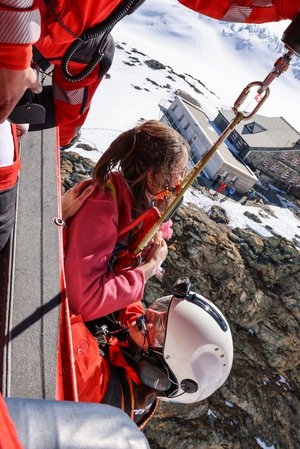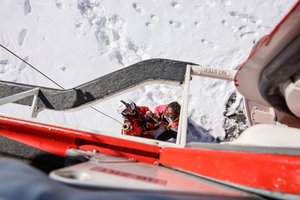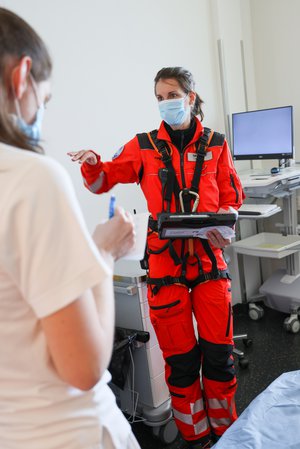The weather on this Easter Sunday is excellent: lots of sun, mild temperatures and good snow conditions, which lure many people into the mountains. This is also the case with a young teacher from the canton of Berne who, together with a friend, sets out on a ski tour to the Giglistock (Canton Berne) in the Uri Alps. But then, during the ascent, it happens: the woman slips, loses her balance and falls around 30 metres over a rocky ledge onto the Steinlimi Glacier below. At the time of the accident, many other ski tourers are out and about and witness the accident. Some of them, together with her friend, administer first aid to the casualty and alert Rega.
Landing at the accident site is not possible
It is shortly before half past ten when the emergency call comes in at Rega’s Operations Centre. Flight coordinator Conny Hirt is on duty that day and immediately dispatches the crew from the Wilderswil base. The crew, comprising emergency flight physician Selina Hauser, paramedic Andrea Crivelli and pilot Rick Maurer, are just pushing the helicopter out of the hangar when their mobile phones start beeping. A glance at the map on the display shows the crew, who are familiar with the area, that it will hardly be possible to land at the accident site. While pilot Maurer starts up the helicopter’s engines, emergency flight physician Hauser already pulls on the harness that she will need for the mission with the rescue hoist. Paramedic Crivelli takes her place on the swivel seat in the cabin instead of her usual seat in the front left of the cockpit, from where she will operate the hoist. This way, on arrival at the accident site, the crew do not waste any time and can immediately begin with the hoist rescue. For a fall from a height of 30 metres does not bode well – every minute counts. “On every mission, we consider different scenarios and try to anticipate what might await us. Nevertheless, it’s important not to get fixed ideas about anything and to remain open to the unexpected. In this particular case, we were prepared for the worst,” explains pilot and base manager Rick Maurer.



